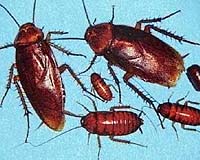| . |  |
. |
Suva (AFP) Sept 14, 2009 The first ever positive identification at sea of one of the world's most mysterious and endangered seabirds has raised hopes for the survival of the Fijian petrel, conservationists said Monday. After one specimen was identified in 1855, the Fiji petrel virtually disappeared and was not positively identified again for 130 years. A successful 11-day expedition by scientists to the seas off the Fijian island of Gau in May was the first time the chocolate coloured petrel had ever been positively identified on the water. The sighting was made public last week when an expedition organised by Fijian conservation organisation NatureFiji-MareqetiViti announced the find in the latest issue of Bulletin of the British Ornithologists' Club. Now there are hopes that renewed efforts to find the petrel's nesting burrows believed to be on Gau island can lead to protection measures to ensure the survival of the critically endangered species. "We really can't get ahead with conserving this bird until we find nesting burrows," Dick Watling of NatureFiji-MareqetiViti told AFP. "Only when we find those burrows can we protect them and then be assured we've got a population that is recruiting young," he said. Watling was the first to rediscover the seabird on land at Gau in 1984, using a spotlight at night to attract one of the elusive petrels. Since then there have been around 16 mainly unconfirmed sightings on Gau, due in many cases to the birds crashlanding on house roofs at night. The organisation believes probably only about 50 Fiji petrels survive, adding urgency to attempts to find the nesting burrows in forested rugged hills on Gau, which lies about 90 kilometres (56 miles) east of Fiji's main island of Viti Levu. Watling said new international funding will allow another sea trip in October in the hopes of capturing a petrel and fitting it with a transmitter to hopefully lead scientists to nesting sites. The funding will also allow specially trained dogs to be brought from New Zealand next year to try to find the nest burrows. Watling said it was not clear what caused the birds to become so endangered, except their burrows are vulnerable to rats, and feral cats and pigs. "Petrels are very smelly, humans can smell them, so cats and pigs would be able to smell them a mile off," he said. "They're still very much an enigma. In the 25 years since rediscovery we've spent a long time searching for the petrel burrows up in the mountains in the forests on Gau without any success." The success of the May expedition was due to using an extremely odorous and oily concoction of fish offal, which was frozen into blocks and dropped in the sea to attract seabirds. On the second day, the first Fiji petrel appeared and up to eight individual Fiji Petrels were seen over 11 days in an area around 25 nautical miles south of Gau.
Share This Article With Planet Earth
Related Links Darwin Today At TerraDaily.com
 Biologists Discover 'Death Stench' Is A Universal Ancient Warning Signal
Biologists Discover 'Death Stench' Is A Universal Ancient Warning SignalHamilton, Canada (SPX) Sep 14, 2009 The smell of recent death or injury that repels living relatives of insects has been identified as a truly ancient signal that functions to avoid disease or predators, biologists have discovered. David Rollo, professor of biology at McMaster University, found that corpses of animals, from insects to crustaceans, all emit the same death stench produced by a blend of specific fatty acids. ... read more |
|
| The content herein, unless otherwise known to be public domain, are Copyright 1995-2009 - SpaceDaily. AFP and UPI Wire Stories are copyright Agence France-Presse and United Press International. ESA Portal Reports are copyright European Space Agency. All NASA sourced material is public domain. Additional copyrights may apply in whole or part to other bona fide parties. Advertising does not imply endorsement,agreement or approval of any opinions, statements or information provided by SpaceDaily on any Web page published or hosted by SpaceDaily. Privacy Statement |